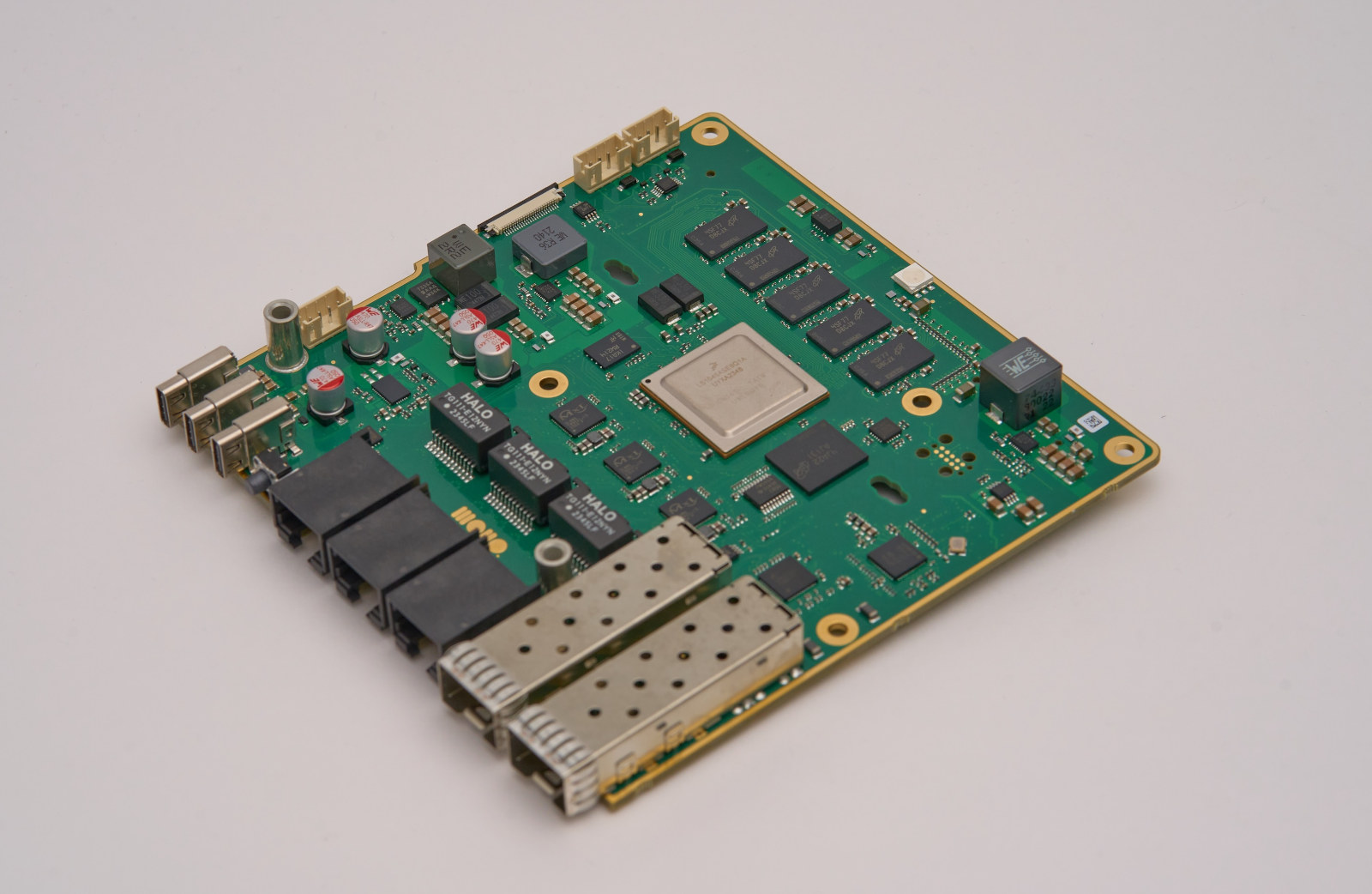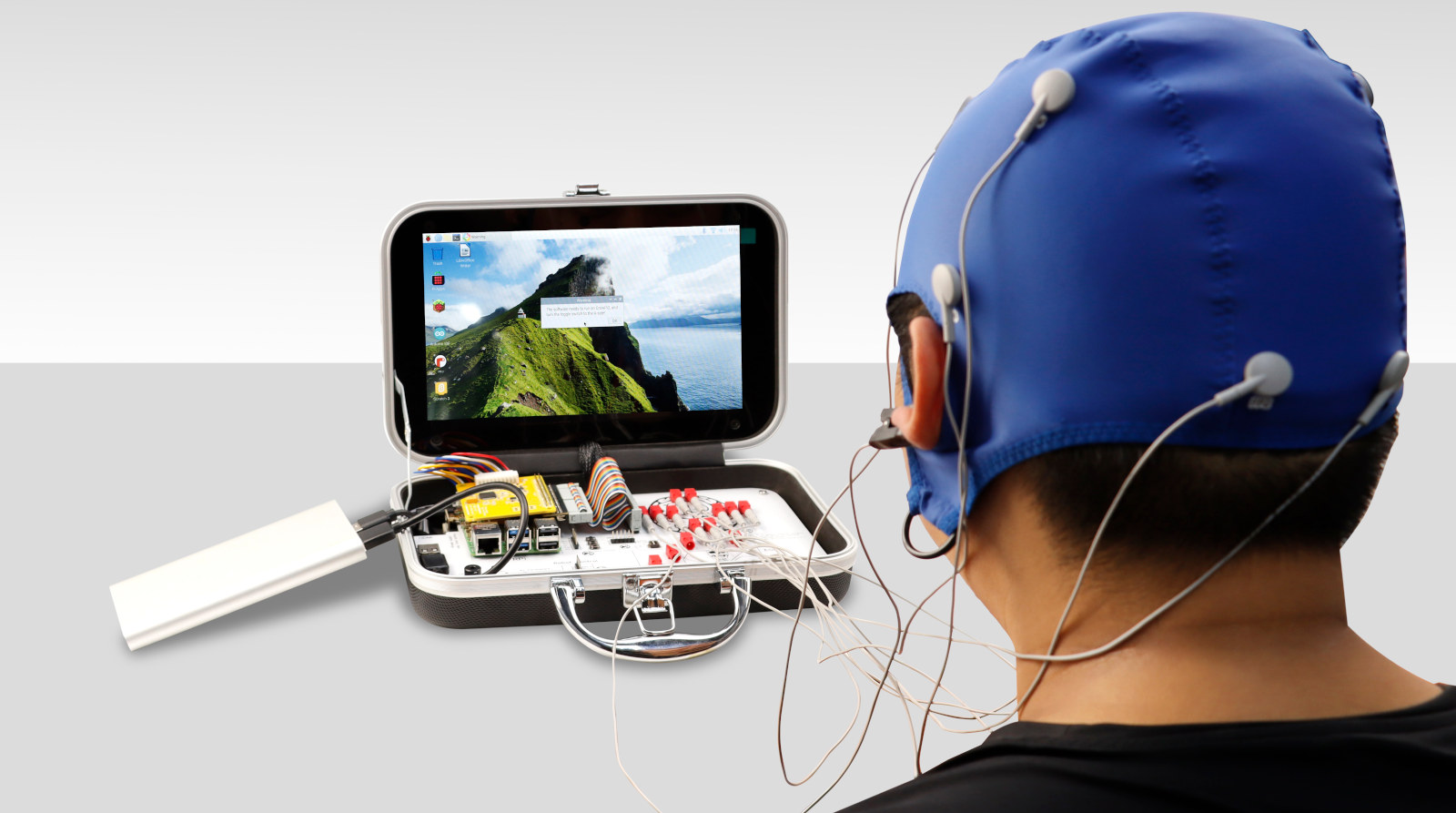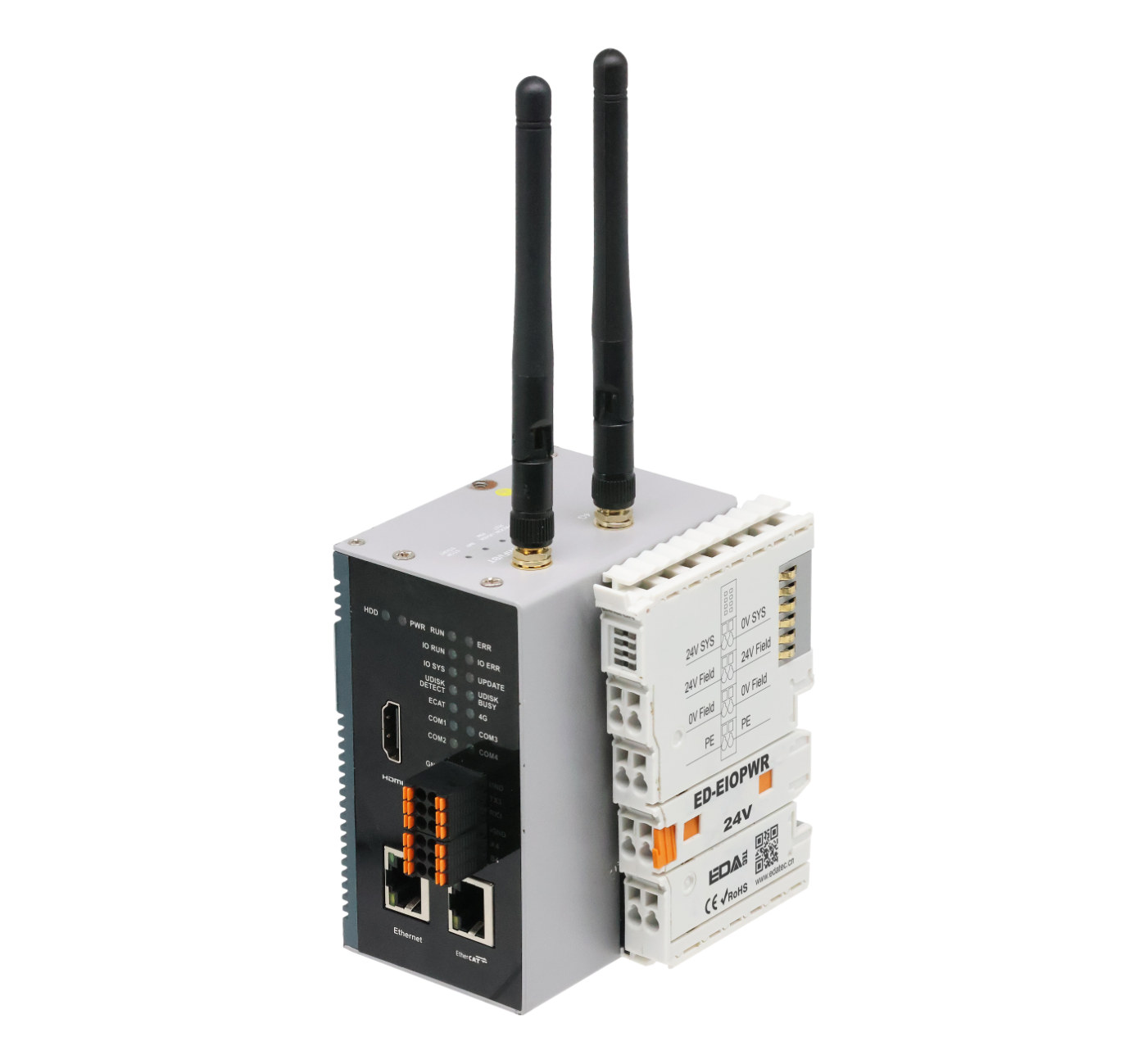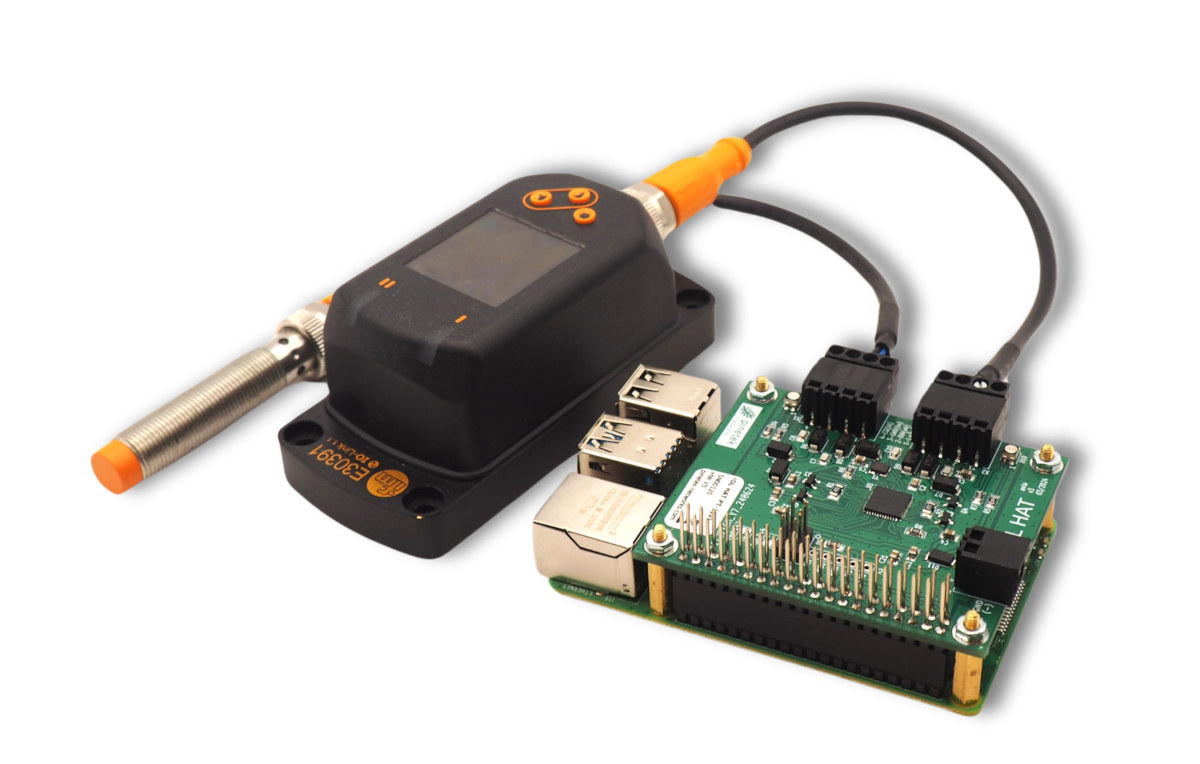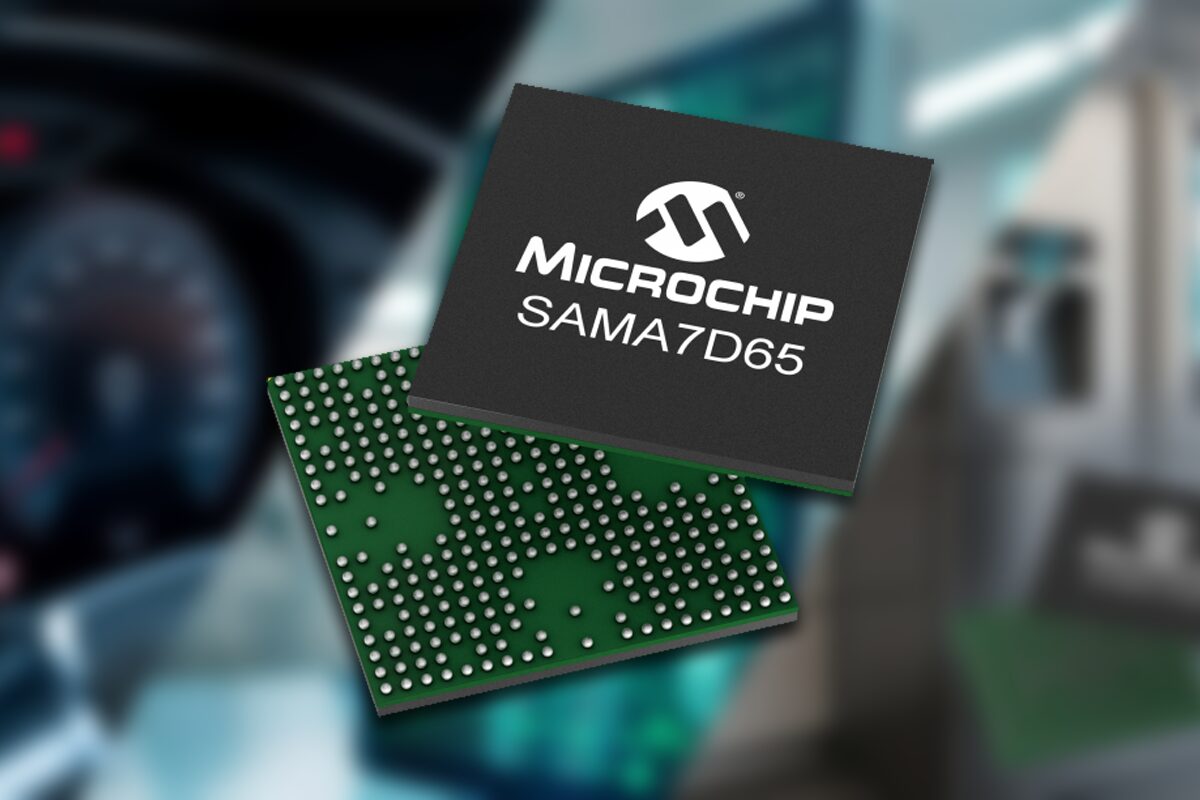The Mono Gateway is a nano-ITX router board powered by an NXP LayerScape LS1046A quad-core processor and equipped with two 10GbE SFP+ cages, three gigabit Ethernet RJ45 ports, and M.2 sockets for wireless WiFi 6 and/or tri-band WiFi 5, Bluetooth, and Thread modules. Tomaž Zaman’s YouTube channel description reads “I hate routers”, and that’s exactly why the “Gateway” came to life. He wanted a router that meets his expectations and runs open-source software. The NXP Layerscape LS1046A was selected thanks to its ability to support 10 Gbps Ethernet with up to 26 Gbps line-rate throughput for VLANs, PPPoE, and NAT. Let’s have a look. Mono Gateway specifications: SoC – NXP Layerscape LS1046A quad-core Cortex-A72 processor @ 1.6 GHz System Memory – 8 GB ECC RAM @ 2100 MT/s Storage 32 GB eMMC flash for the OS 64 MB NOR flash for the bootloader Networking 2x SFP+ 10 Gbps Ethernet cages […]
T-Pico-2350 is a fully integrated devkit with Raspberry Pi RP2350, ESP32-C6, 2.33-inch color touchscreen display, and HDMI video output
LILYGO T-Pico-2350, also called the T-Pico2, is a fully enclosed devkit based on Raspberry Pi RP2350 MCU, an ESP32-C6 SoC for wireless connectivity, a 2.33-inch capacitive color touchscreen display, and an HDMI (DVI) video output port. The design is an update to the T-PicoC3 introduced in 2022 with the case design of the T-Display S3 Pro, and the devkit also features a microSD card slot, a USB-C port for power and programming, two GPIO headers, a 13-pin GPIO FPC connector, two Qwiic I2C/UART connectors, and a PMU for battery management. T-Pico-2350 specifications: Microcontroller – Raspberry Pi RP2350A CPU Dual-core Arm Cortex-M33 @ 150 MHz with Arm Trustzone, Secure boot OR Dual-core RISC-V Hazard3 @ 150 MHz Up to two cores can be used in any combination Memory – 520 KB on-chip SRAM Storage 16MB SPI flash connected to RP2350 MicroSD card slot Display – 2.33-inch color IPS LCD (ST7796S SPI […]
PiEEG kit – A Raspberry Pi 5-based bioscience lab in a suitcase (Crowdfunding)
Yesterday we wrote about using quantum sensors for brain-computer interfaces (BCI) and other biomedical applications. But that’s the future, and if you want to experiment with brain-computer interface technology and bioscience, the PiEEG kit has everything you need to get started, with all components fitting in a suitcase easy to carry around between your home and university or school. The bioscience home lab is based on the PIEEG Shield for Raspberry Pi introduced in 2023, and features a Raspberry Pi 5 8GB, a 9-inch display, a sensor board, EEG electrodes and cables for brainwave measurement, and electrodes for EMG (muscles), EKG (heart), and EOG (eye) signal recording. The PiEEG kit is comprised of the two main custom boards with the following specifications/features: PiEEG Shield on top of the Raspberry Pi 5 ADC – Texas Instruments ADS1299 Analog-to-Digital Converter for biopotential measurements Host interface – 40-pin GPIO header with SPI protocol […]
Raspberry Pi CM4-powered CODESYS industrial controller supports EtherCAT, Modbus, up to 32 I/O modules
EDATEC ED-PLC2010 is an industrial controller powered by a Raspberry Pi CM4, supporting EtherCAT and Modbus interfaces, up to 32 I/O modules, and preloaded with CODESYS runtime for real-time core and visualization capabilities. DIN Rain-mountable Raspberry Pi CM4 industrial controllers are not exactly new, with products such as Modberry 500 CM4 and Edgebox-RPI4 announced shortly after the launch of the Raspberry Pi Compute Module 4 in 2020. More recently (2024), Seeed Studio introduced the reComputer R1113-10 IoT gateway, and Sfera Labs launched the Strato Pi Max. TECHBASE also upgraded the Modberry 500 with a more powerful CM5 module. EDATEC ED-PL2010 mostly differentiates itself by shipping with a licensed version of CODESYS runtime for industrial automation. It’s also possible with other vendors, but the license might need to be purchased separatly. EDATEC ED-PLC2010 specifications: SoM – Raspberry Pi CM4 SoC – Broadcom BCM2711 CPU – Quad-core Cortex-A72 SoC @ 1.5GHz GPU […]
IOL HAT adds an IO-Link compatible master to Raspberry Pi for industrial IoT sensors and actuators
Pinetek Networks’ IOL HAT is a Raspberry Pi expansion board using the IO-Link (IEC 61131-9) protocol to interact with industrial sensors. It’s based on the Analog Devices MAX14819 IO-Link master transceiver and offers two SDCI (“Single-Drop Digital Communication”) connectors. While work on the IO-Link communication protocol started in 2006, and the IEC 61131-9 “Single-drop digital communication interface (SDCI) for small sensors and actuators” standard was adopted in 2013, it only recently came onto our radar with products like the STMicro EVLIOL4LSV1 IO-Link actuator board and Renesas CCE4511 IO-Link master and ZSSC3286 IO-Link sensor signal conditioner. The IOL HAT brings the IO-Link standard for industrial IoT communication to the Raspberry Pi. IOL HAT specifications: IO-Link chip – Analog Devices MAX14819 dual IO-Link master transceiver with integrated framers and L+ supply controllers 2x SDCI ports for IEC 61131-9 (IO-Link) sensors and actuators Host connection (one or the other) PT-1201 model – 40-pin […]
Antenna hack more than doubles the range of cheap ESP32-C3 USB-C boards
There are plenty of small ESP32-C3 IoT boards with a USB-C connector on the market, and while they all look very similar, antenna designs differ, and less thought-out ones may severely impact the WiFi and Bluetooth range. Peter Neufeld decided to hack one of those cheap ESP32-C3 boards by adding a custom antenna, and this resulted in the board having more than twice the range and almost three times in some cases. Those tiny boards are cramped, so there’s very little space around the ceramic antenna typically used, leading to poor RF performance. To work around that issue, Peter added a 31mm long antenna made of silver-plated wire, making a loop of about 8mm in diameter outside of the board and soldered on the ceramic antenna’s solder joints, and the rest of the wire (about 15mm) points upwards. As you can see from the photo above, he didn’t remove the […]
Microchip SAMA7D65 Cortex-A7 MPU comes in SoC and SiP packages with up to 2Gbit integrated DDR3L memory
Microchip has recently released the SAMA7D65 MPU, a high-performance Arm Cortex-A7 embedded processor designed for HMI and connectivity applications across industrial, home, medical, and appliance markets. The MPU is available in both System-in-Package (SiP) and System-on-Chip (SoC) variants and features various display interfaces, including MIPI DSI, LVDS, and 8-bit Serial RGB interfaces, along with a 2D GPU for graphical acceleration. Memory and storage options include support for 16-bit DDR2/DDR3/DDR3L and LPDDR2/3 memory, optional 1 Gbit or 2 Gbit DDR3 RAM, NAND Flash, eMMC Flash, and SD card. It features dual Gigabit Ethernet with TSN support, an I3C controller, five CAN-FD interfaces, and three high-speed USB ports. Additionally, it comes with various security features, including physically unclonable function (PUF), secure boot, key storage, and cryptographic accelerators for AES, SHA, RSA, and ECC. Microchip SAMA7D65 SoC/SiP specifications: CPU – Arm Cortex-A7 core up to 1 GHz Arm TrustZone, NEON, FPU 32KB L1 I-cache […]
ADLINK COM-HPC-mMTL – A COM-HPC Mini Computer-on-Module with up to 16-core Intel Core Ultra 7 165H processor
ADLINK COM-HPC-mMTL is an industrial-grade COM-HPC Mini Computer-on-Module based on Intel Meteor Lake processors up to the 16-core Intel Core Ultra 7 165H featuring Intel Arc Graphics with eight Xe cores, Intel AI Boost NPU up to 8.2 TOPS, and 16x PCIE Gen4 lanes. The COM-HPC R1.2-compliant Mini size module also supports up to 64GB LPDDR5x memory soldered directly onto the board, an optional NVMe BGA SSD, and features two SATA interfaces, two 2.5 Gbps Ethernet, multiple DDI/USB4, and USB 3.0/2.0 through the standard 400-pin board-to-board connector of the 95x70mm CoM. ADLINK COM-HPC-mMTL specifications: Meteor Lake H/U SoC (one or the other) Intel Core Ultra 7 165H 16-core (6P+8E+2LPE) processor @ up to 5.0 / 3.8 / 2.5 GHz with 24MB cache, 8x Xe-cores Intel Arc graphics @ 2.35 GHz, Intel AI Boost NPU; TDP: 28W Intel Core Ultra 7 155H 16-core (6P+8E+2LPE) processor @ up to 4.8 / 3.8 […]


